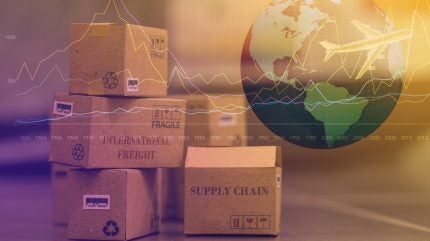
The global commercial packaging industry is a vital part of today’s economy, supporting a vast range of sectors including food and beverages, pharmaceuticals, cosmetics, and consumer goods.
This market is continually evolving, influenced by multiple factors that shape how packaging is designed, produced, and delivered worldwide. Understanding the key drivers behind this growth is crucial for companies aiming to stay competitive and meet modern demands.

Discover B2B Marketing That Performs
Combine business intelligence and editorial excellence to reach engaged professionals across 36 leading media platforms.
Let’s explore the main forces shaping the global commercial packaging industry today.
Sustainability demands transforming packaging practices
Sustainability is one of the most powerful drivers in the commercial packaging market. Increasing awareness about environmental issues, combined with stricter regulations worldwide, has pushed businesses to rethink traditional packaging methods.
Consumers are more conscious than ever about the impact of packaging waste, leading to a surge in demand for eco-friendly materials and designs.
Materials such as recycled paper, biodegradable plastics, and plant-based fibres are becoming standard choices for many companies seeking to reduce their environmental footprint.

US Tariffs are shifting - will you react or anticipate?
Don’t let policy changes catch you off guard. Stay proactive with real-time data and expert analysis.
By GlobalDataGovernments across different regions are enforcing bans on single-use plastics and encouraging recycling initiatives, which further accelerate the shift towards sustainable packaging solutions.
Besides materials, the industry is focusing on minimising packaging waste through smarter design.
Lightweight packaging, easy-to-recycle components, and reusable containers are becoming priorities, aligning with the circular economy model where packaging materials are kept in use for as long as possible.
Technological innovation driving efficiency and consumer engagement
Technology plays a crucial role in shaping the commercial packaging industry. Advances in manufacturing automation have improved production speed and reduced costs, allowing companies to respond more quickly to market trends and consumer needs.
Digital printing technology offers brands the ability to customise packaging with unique designs and small batch runs, enhancing brand visibility and consumer connection. This flexibility is especially valuable for seasonal promotions, limited editions, or regional variations.
Smart packaging is another significant trend, incorporating technologies like QR codes, RFID tags, and sensors that provide valuable data and interactive features. For example, smart packaging can inform consumers about product freshness, authenticity, or proper usage instructions, improving safety and user experience.
E-commerce growth has also influenced packaging innovation, with a focus on designs that protect products during shipping while offering an appealing unboxing experience.
Durable, lightweight, and sustainable packaging solutions have become essential for brands looking to succeed in the competitive online retail space.
Market challenges and future outlook
While the global commercial packaging market is expanding, it faces challenges that companies must navigate carefully.
Fluctuating raw material costs, supply chain disruptions, and geopolitical factors can impact production and pricing. Balancing affordability with quality and sustainability is an ongoing concern.
Consumer attitudes also play a critical role. Although interest in sustainable packaging is growing, price sensitivity remains an obstacle for many buyers. Brands must communicate clearly the value of eco-friendly options to encourage widespread acceptance.
Looking ahead, the commercial packaging industry is expected to continue evolving with an emphasis on sustainability and technological integration. Circular economy principles will guide packaging design and material selection, helping reduce waste and environmental impact.
The rise of smart packaging, combined with data-driven supply chains, will enhance transparency and efficiency. This will enable better inventory management, product safety, and personalised consumer engagement.
Ultimately, sustainability concerns, technological advancements, and changing consumer behaviours are the key drivers shaping the global commercial packaging industry.
Businesses that adapt to these forces will be well placed to meet regulatory requirements, satisfy customer expectations, and thrive in an increasingly competitive market.
The future of commercial packaging lies in innovation, responsibility, and creating value for both brands and consumers worldwide.





